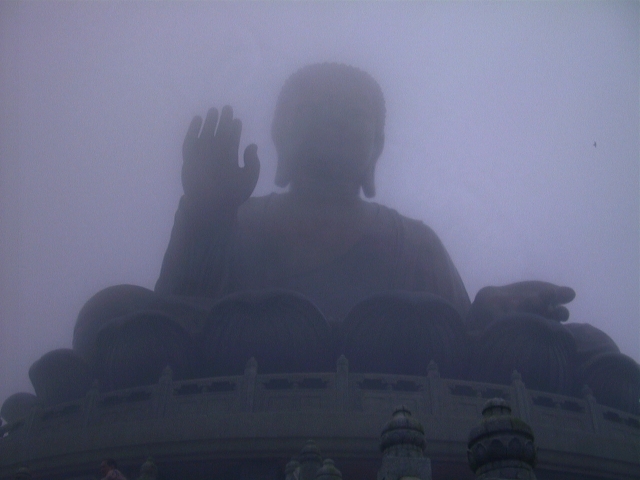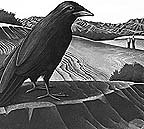
Madame H. P. (Helena Petrovna) Blavatsky, one of the major founders of the Theosophical Society, outlines a way toward spiritual Illumination in her book Voice of the Silence. In the book Blavatsky describes the passage through three halls that are necessary to reach the Ultimate State. Those three halls are the:
- Hall of Ignorance
- Hall of Learning
- Hall of Wisdom
Much has been cited regarding the "Hall of Learning," the "Hall of Wisdom" and "Hall of Records" in relation to works of the American clairvoyant and psychic Edgar Evans Cayce and the modern day psychic Sylvia Browne. Interestingly enough, Blavatsky's book, which explores similar themes and actually mentions two of the halls, was originally published in 1889 --- when Edgar Cayce was only 12 years old and a full 47 years before Sylvia Browne was born. From the early 1920s on, Blavatsky follower Alice A. Bailey was producing a tremendous amount of literature regarding the "halls" as well. Equally interesting is the fact that a fictional love story written by Richard Matheson titled "What Dreams May Come" and published in 1978 match a lot of Browne's facts/theories (The Hall of Wisdom, Working plateaus, etc.) that show up in her book titled "Life on the Other Side" and published in 1999. In a similar vein, Mary Sutherland writes recently in The White Stone, of an experience she describes as astral travel:
"I remembered a grecian/temple type place...like a gigantic library with long halls, tall rounded pillars, with these stone tables and benches in a large room where students were studying ancient papers. I remembered myself being in one of the halls filled on each side with shelves upon shelves of books. The voice within my head then, upon my recollection of my astral experience, told me 'this is the Hall of Wisdom."
How much any of the above authors were influenced by each other is not fully known, however if each arrived at their conclusions independently, then there is a strong case that what they describe is how it is. Sutherland makes it clear that she knew nothing of Halls of Wisdom or Halls of Learning or anything like them prior to her experience. She writes:
"For years I asked questions to people on where this place was that I had went to. Being that I wasn't in the spiritual circles during that time, no one had the slightest idea of a Hall of Learning. It took me almost 10 years before the mystery was solved for me."
Madame Blavatsky along with Henry Steel Olcott, William Quan Judge and others founded the Theosophical Society in New York City in 1875. The Society's initial objective was to investigate, study and explain mediumistic phenomena in support of their beliefs. Within a few years they moved the Society to India and incorporated aspects of Eastern religions into their philosophy. Noted Zen Buddhist scholar Dr. D. T. Suzuki writes in The Eastern Buddhist (old series, 5:377):
"Undoubtedly Madame Blavatsky had in some way been initiated into the deeper side of Mahayana teaching and then gave out what she deemed wise to the Western world..."
In the mid-to-late 1940s a couple, followers of Madame Blavatsky and the Theosophical Society, traveled from America to visit the Society's headquarters in India. Along the way the couple, of their own choosing and unrelated to any connection to Theosophical Society except for its proximity to the Society headquarters, stopped at the ashram of the venerated Indian holy man the Bhagavan Sri Ramana Maharshi. Scribes of the ashram have written that a young boy traveling with the couple, within an hour of his face-to-face meeting with the Bhagavan, Awakened to the Absolute, his mental barriers reduced to nothingness. See:
SRI RAMANA MAHARSHI: THE LAST AMERICAN DARSHAN
RECOUNTING A YOUNG BOY'S NEARLY INSTANT TRANSFORMATION INTO THE ABSOLUTE DURING HIS ONLY DARSHAN WITH THE MAHARSHI
AWAKENS THE CHILD OF THEOSOPHISTS
The following statements are from Blavatsky's footnotes:
Three Halls, O conqueror of Mara, will bring thee through three states (Jagrat, Svapna, Sushupti) into the fourth (Turiya) and thence into the seven worlds, the worlds of Rest Eternal.
If thou would'st learn their names, then hearken, and remember.
The name of the first Hall is Ignorance, Avidya (the misapprehension about the true nature of things). It is the Hall in which thou saw'st the light, in which thou livest and shalt die. (The phenomenal World of Senses and of terrestrial consciousness -- only.)
The name of the second Hall is the Hall of Learning. In it thy Soul will find the blossoms of life, but under every flower a serpent coiled. (The astral region, the Psychic World of supersensuous perceptions and of deceptive sights. . . . No blossom picked in those regions has ever yet been brought down on earth without its serpent coiled around the stem. It is the world of the Great Illusion.)[1]
The name of the third Hall is Wisdom, beyond which stretch the shoreless waters of AKSHARA, the indestructible Fount of Omniscience. (The region of the full Spiritual Consciousness beyond which there is no longer danger for him who has reached it.)
If thou would'st cross the first Hall safely, let not thy mind mistake the fires of lust that burn therein for the Sunlight of life.
If thou would'st cross the second safely, stop not the fragrance of its stupefying blossoms to inhale. If freed thou would'st be from the karmic chains, seek not for thy Guru in those Mayavic regions. . . .
Seek for him who is to give thee birth, in the Hall of Wisdom, the Hall which lies beyond, wherein all shadows are unknown, and where the light of truth shines with unfading glory.
If through the Hall of Wisdom, thou would'st reach the Vale of Bliss, Disciple, close fast thy senses against the great dire heresy of separateness that weans thee from the rest. . . .
'Tis only then thou canst become a "Walker of the Sky" who treads the winds above the waves, whose step touches not the waters. -- pp. 5-9, 75-6
Fundamentally, our experience as experienced is not different from the Zen master's. Where
we differ is that we place a fog, a particular kind of conceptual overlay onto that experience
and then make an emotional investment in that overlay, taking it to be "real" in and of itself.

|

"The astral region, the Psychic World of supersensuous perceptions and of deceptive sights. . . . No blossom picked in those regions has ever yet been brought down on earth without its serpent coiled around the stem."
"The serpent coiled around its stem" means that in the product or outcome of those practices, i.e., the "blossom picked in those regions," --- the occult, the psychic world, etc. --- there is a price to pay...that is to say, lurking beneath or behind every outcome there always exists some sort of catch, a serpent coiled around its stem, either for the purveyor, the recipient or both.
Why the serpent analogy? Serpents from earliest times have carried ahead of them an indepth connontation, some good, some bad. The Egyptian word Ob or Aub means "serpent." Oph is a winged serpent or dragon; and Ab means wisdom, understanding, and together means "Serpent of Wisdom" or "Serpent of Knowledge." Oub or Ob, and Oubos (sometimes: Oubaios, although it should be rendered Oubos for oubaios is a possessive, and not a proper name) was the name of the Basilisk or royal serpent, emblem of the sun, and an ancient oracular deity of Africa. It is the root word for Obeah, the most dreaded and powerful of the occult practices. (source)
 |
THE BEST OF CARLOS CASTANEDA |
| <<< PREV ---- LIST ---- NEXT >>> | |